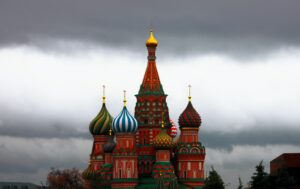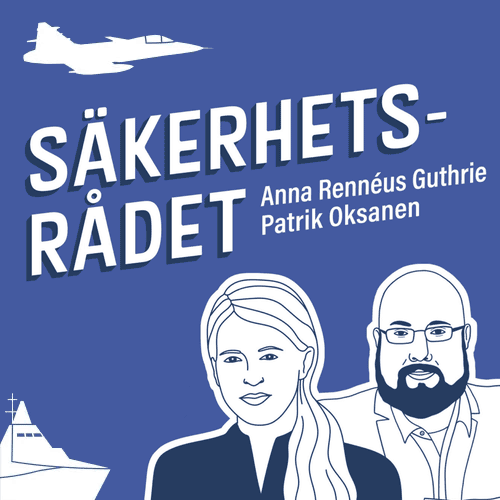After Vladimir Putin launched his war of aggression against Ukraine in February 2022, the Russian economy has been extremely unstable, but it is unlikely to collapse.
The Western sanctions are having great impact. The two important macroeconomic sanctions are the severe financial sanctions and the energy sanctions that limit Russia’s oil and gas revenues. Russia’s GDP fell by only 2.1 percent last year and it might decline similarly this year. More important, however, is that the financial and energy sanctions limit how much Putin can spend on his military.
Strangely, Putin does not care about economic growth. Thanks to the eminent market reforms by President Boris Yeltsin and acting Prime Minister Yegor Gaidar in the 1990s, Putin arrived at a laid table, and Russia enjoyed an average economic growth of 7 per cent a year from 1999 to 2008, but Putin has minimized the growth since 2009 and eliminated it since 2014.
By contrast, Putin cares about financial stability. In August 1998, Russia went through a severe financial crisis. It devalued the ruble by three-quarters, defaulted on its public debt, and inflation surged to 48 percent. President Yeltsin had little choice but to sack the Sergei Kirienko government one week later. Putin drew the lesson: Never again! Since then, he has insisted on fiscal and monetary austerity.
Yet, the Russian economy is not very stable. Before Russia’s occupation of Crimea and eastern Ukraine in 2014, the ruble exchange rate was relatively stable at 32 rubles per US dollar. But it halved because of Western financial sanctions in 2014.
Before Russia’s next invasion of Ukraine in February 2022, the exchange rate was 74 rubles per dollar, but within one month the exchange rate halved to 135 rubles per dollar because of the severe Western financial sanctions. Russian banks with 80 percent of the banking assets have now been sanctioned and $300 billion of Russian Central Bank reserves kept in the West were frozen.
The Central Bank of Russia reacted drastically. It hiked its interest rate from 9.5 percent to 20 percent. It managed to restore confidence in the ruble. On June 20, 2022, it had risen to 50 rubles per dollar. Yet, inflation rose from 7 percent before the war to 17 percent in April because of the big devaluation and financial panic in February-March. As inflation abated, the Central Bank reduced the interest rate rather fast to 7.5 percent in September. The financial crisis seemed to be over.
If the ruble behaves like a yoyo, we cannot talk about financial stability, and it is not obvious that it was the Central Bank that helped Russia out. Something much bigger was helping Russia. The European energy market panicked. Oil prices rose because of the war and gas prices skyrocketed, and Russia continued to sell its overpriced oil and gas to Europe. Its export revenues surged with the oil and gas prices from paltry $382 billion in 2020 to $628 billion in 2022.
Russia has usually a large current account surplus, but it is matched by a substantial net capital outflow of about $40 billion a year. In 2022, however, Russia’s current account surplus spiked at $236 billion, while the net capital outflow rose correspondingly to $239 billion. During the first half of this year, the Russian Central Bank assessed the current account surplus at only $23 billion and the net capital outflow at $27 billion.
Because of his war, Putin has abandoned his policy of a balanced budget and opted for a large and increasing budget deficit, doubling Russia’s military expenditures from about 6 percent of GDP to 12 percent of GDP. His problem is that he cannot finance it any longer. Russia has a small public debt of 15 percent of GDP, but nobody will lend Russia any money because of the Western financial sanctions. Putin had built vast foreign currency reserves of $640 billion to protect his “Fortress Russia,” but the West has frozen half of that, and most of the remainder is not liquid in useless Chinese currency, special drawing rights, and gold. The Western oil and gas sanctions have slashed Russia’s expert revenues by up to one-third ($200 billion). The Western sanctions hinder his rearmament.
Russia has just gone through a new ruble crisis because of Putin’s economic folly. In August, its value plummeted from 73 rubles per US dollar to 100 rubles per dollar, and it has stayed in the 90s. Putin’s obedient Central Bank responded by hiking its interest rate from 7.5 percent to 12 percent. That will hardly be enough. Putin faces the choice between tanking the ruble or limiting his rearmament. He is likely to limit his rearmament. Anders Åslund is the author of “Russia’s Crony Capitalism: The Path from Market Economy to Kleptocracy” (Yale UP).
Stockholm Free World Forum published a report authored by Anders Åslund, senior fellow, about the article’s subject. The report can be found here. The report is written in Swedish.

